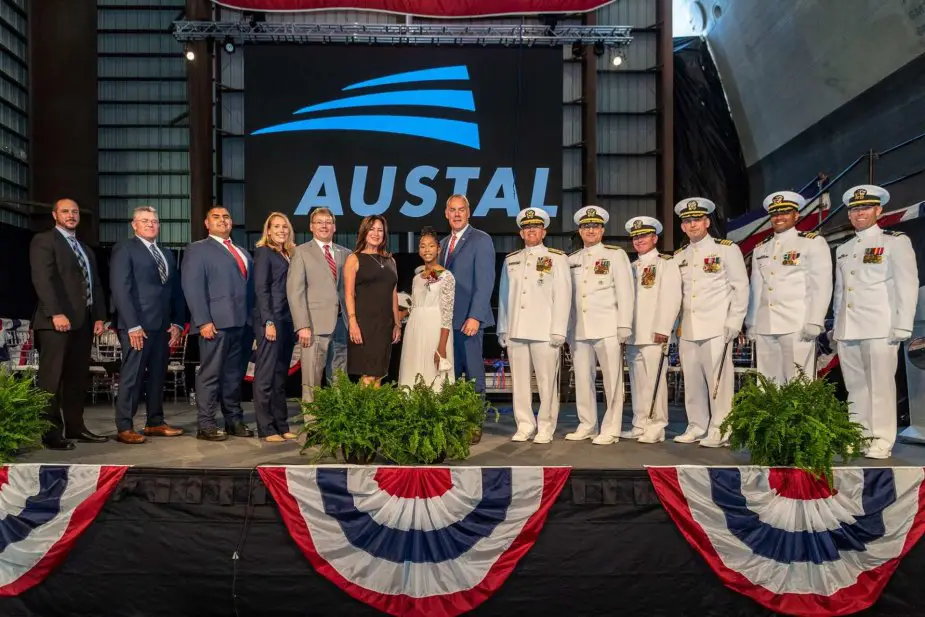Breaking news
Austal delivers the Independence class LCS USS Santa Barbara to US Navy.
According to information published by the U.S. DoD on July 21, 2022, the Navy accepted delivery of a littoral combat ship (LCS), the future USS Santa Barbara (LCS 32), on July 21 at Austal USA’s shipyard in Mobile, Alabama. LCS 32 is the third ship to bear the name of the famous seaside resort and city located in southwestern California.
Follow Navy Recognition on Google News at this link
 Christening ceremony of the Independence-class LCS USS Santa Barbara (Picture source: US Navy)
Christening ceremony of the Independence-class LCS USS Santa Barbara (Picture source: US Navy)
Santa Barbara completed at-sea acceptance trials on June 3, the last significant milestone before a vessel is delivered to the Navy. Following delivery, Santa Barbara will sail to her homeport in San Diego, California. The ship is scheduled to be commissioned in the second quarter of Fiscal Year 2023.
Three additional Independence-variant littoral combat ships are under construction at Austal USA, including the recently launched future USS Augusta (LCS 34), the future USS Kingsville (LCS 36), and the future USS Pierre (LCS 38).
LCS is now the Navy’s second-largest surface ship class in production. The future Santa Barbara marks the third LCS delivered in Fiscal Year 2022, following the Freedom-variant USS Minneapolis-Saint Paul (LCS 21) and Independence-variant USS Canberra (LCS 30) deliveries in November 2021 and December 2021, respectively.
The first Santa Barbara, a single-screw steel freighter built in 1916 by William Cramp and Sons of Philadelphia, was ordered taken over by the Navy on February 1, 1918, from the Atlantic & Pacific Steamship Co. of New York and subsequently commissioned on April 15, 1918, in New York.
The second Santa Barbara, a Kilauea-class ammunition ship, was laid down on December 30, 1966, by the Bethlehem Steel Corp., Sparrows Point, MD, launched on January 23, 1968, and commissioned on July 11, 1970.
The littoral combat ship is a fast, agile, mission-focused platform designed to operate in near-shore environments, while capable of open-ocean tasking and winning against 21st-century coastal threats such as mines and swarming small craft. They are capable of supporting forward presence, maritime security, sea control and deterrence.
The USS Santa Barbara (LCS-32) has a length of 127.4 m, a beam of 31.6 m, a draft of 4.27 m and a displacement of 3,104 metric tons. It will have a crew of 40 people including 8 officers and 32 enlisted.
The propulsion systems of the LCS-32 include two gas turbines, two diesel engines, four waterjets, a retractable Azimuth thruster, and four diesel generators. She will be able to reach a top speed of 40 knots (87 km/h) with a maximum cruising range of 4,300 nautical miles (8,000 km) at 20 knots (37 km/h).
The LCS-32 is armed with one BAE Systems Mk 110 57 mm gun, four .50 cal (12.7 mm) guns, and Evolved SeaRAM 11 cell missile launcher. The flight deck of 1,030 m2 can support the operation of two SH-60 Seahawk helicopters, multiple unmanned aerial vehicles, or one CH-53 Sea Stallion helicopter.




























